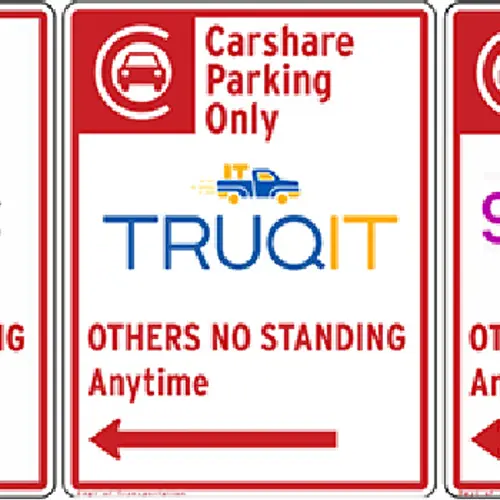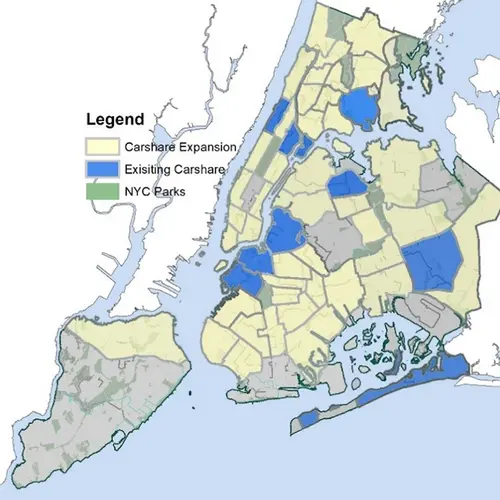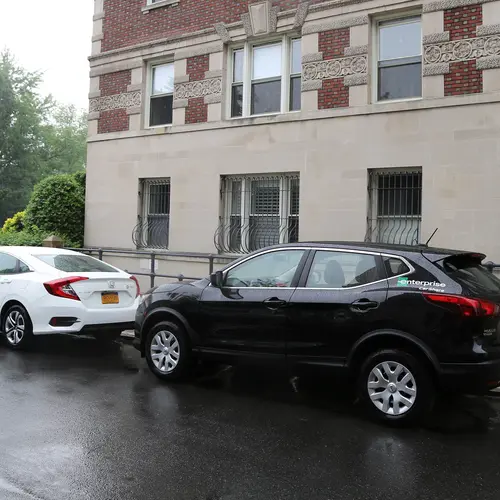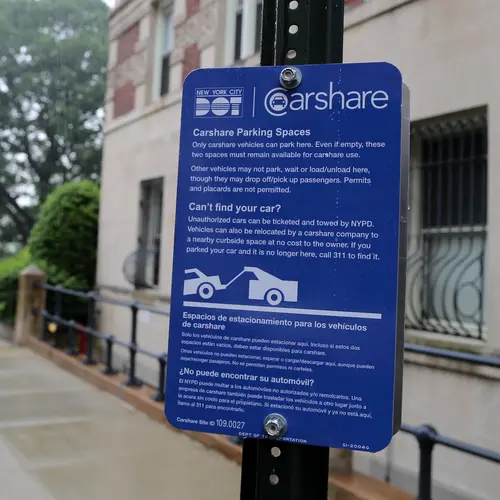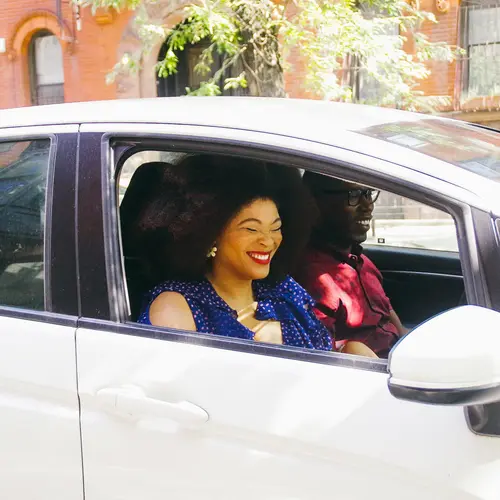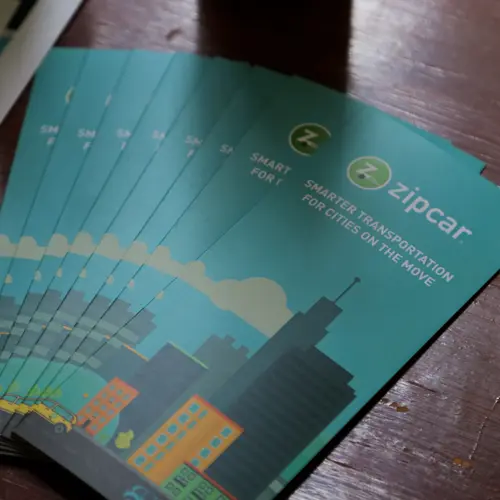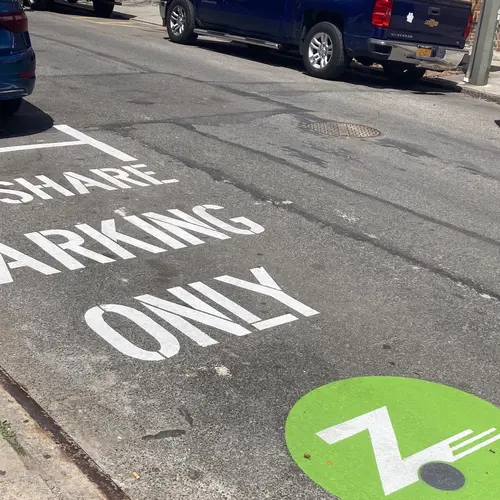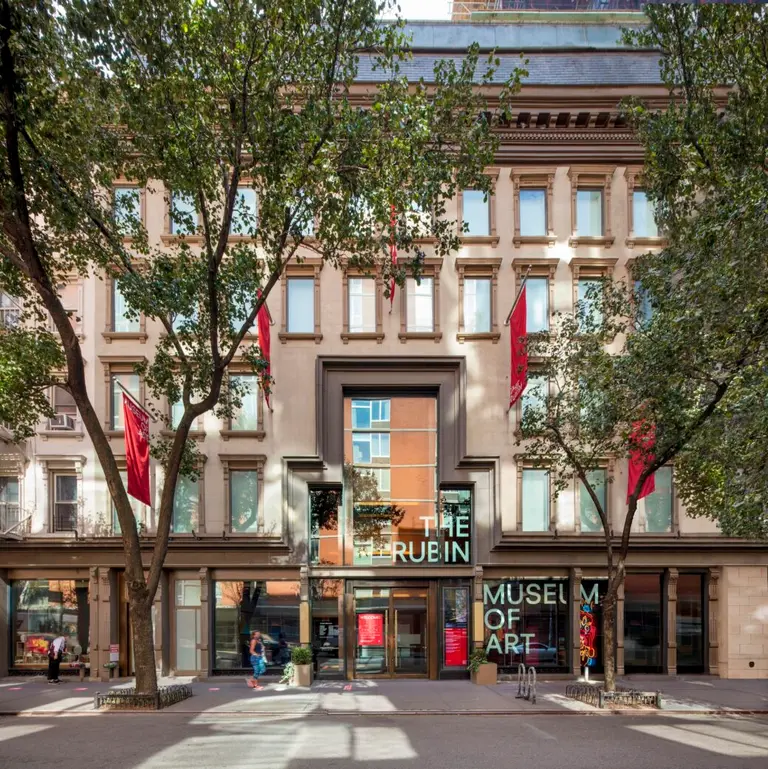NYC begins citywide expansion of on-street carshare parking program
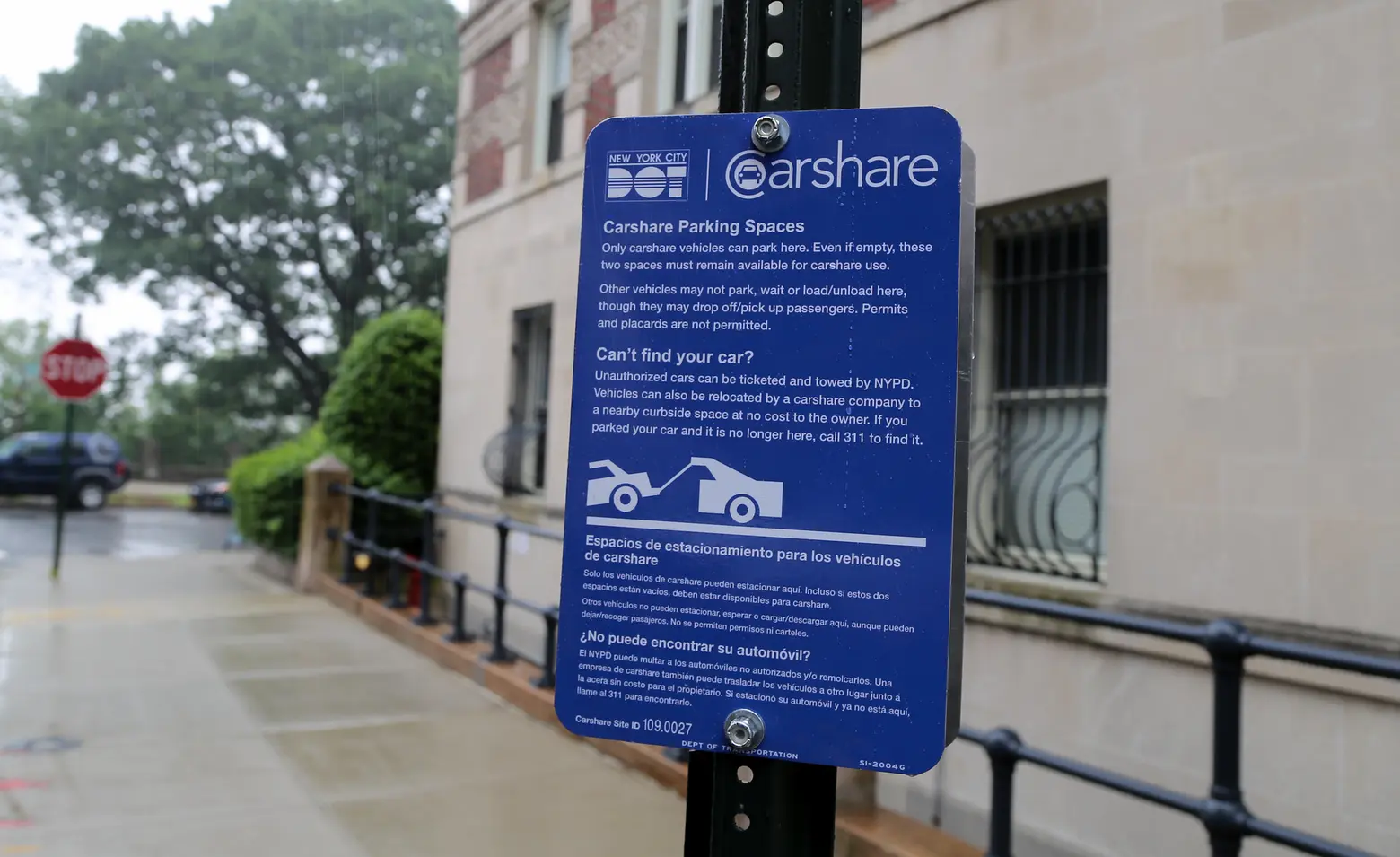
New York City’s Department of Transportation (DOT) announced Tuesday the installation of 80 new dedicated curbside parking spaces that will be reserved for carshare vehicles throughout the city. The parking spots are part of a program intended to increase access to convenient carshare vehicles after a successful five-year pilot was shown to reduce greenhouse gas emissions and personal car ownership. Over the next two weeks, signs for the dedicated parking spaces will be installed across Brooklyn, the Bronx, and Queens.
Carsharing refers to membership services that offer access to an automobile for short-term use. DOT’s original pilot program was launched in 2018, with the goal of adding 300 on-street and DOT-managed lot spaces. Since the launch, greenhouse gas emissions, and vehicle miles traveled were shown to have declined seven percent and six percent, respectively; for every carshared vehicle in the program, four personal vehicles were either not purchased or sold.
“We now have the proof that convenient access to carshare frees New Yorkers from the burden of car ownership–while helping to fight climate change,” DOT Commissioner Ydanis Rodriguez said in a statement that accompanied the announcement. “Soon more New Yorkers will have access to a vehicle when required–no need to sign an expensive lease or to fret about finding a parking space.”
“With thanks to the Mayor for his support, we are excited to build on the successes of our pilot, cutting down greenhouse gas emissions and vehicle miles traveled while supporting efficient use of space at the curb. We encourage New Yorkers to give this great program a try!”
The program’s goal for 2023 is to add several hundred more to the current 230 on-street parking spaces, with a focus on equitable distribution, working with Zipcar, Getaround, and Truqit to deploy their cars. The newest batch of carshare spaces will be created in the Pelham Bay and Westchester Square sections of The Bronx; Bay Ridge, Bushwick, Brownsville, and Sunset Park in Brooklyn; and Ozone Park, South Ozone Park, Long Island City, and Woodside in Queens. Exact site locations can be found on the DOT’s website.
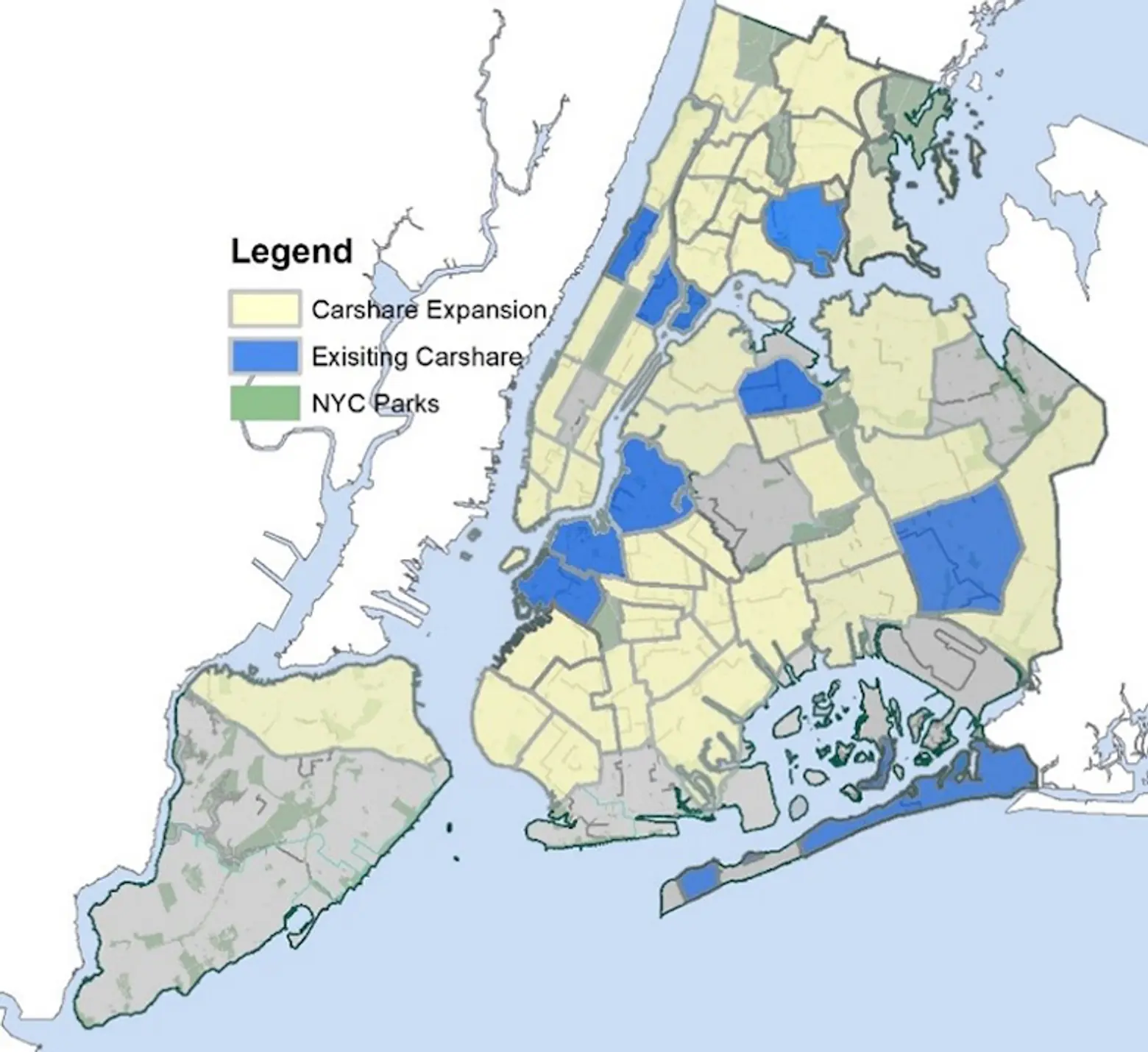
NYC DOT’s carshare map illustrating existing service and future expansion, which begins this week, by community board district. Image: NYCDOT.
Locations are being chosen by the participating carshare companies based on customer demand and household demographic data, after outreach efforts and feedback from community boards; once all are in place, an up-to-date map of locations will be available here.
DOT has called the results of the pilot, “significant and promising.”
- Carshare users took about 160,000 trips total during the pilot, with an average of 24 trips per month per space. Each month, an average of 17 unique carshare members used vehicles in each space.
- Using detailed customer surveys, researchers concluded that for every car shared within the city, four personal vehicles were either not purchased or sold; In the pilot, about 1,140 users, or 7 percent of program participants, either sold their cars or opted not to purchase a new one.
- Annual Vehicles Miles Traveled (VMT) were reduced by about 38.7 million miles and produced an annual net reduction of ~12,000 metric tons in greenhouse gases per year.
- Comparing their pre-carshare behavior, carshare users in the pilot drove fewer miles (7 percent reduction) and reduced greenhouse gas emissions (6 percent reduction).
- The pilot dramatically increased diversity: Black/Latino membership doubled to about 30 percent of total carshare users.
- After the first year of the pilot, unauthorized use of on-street carshare parking spaces declined dramatically after DOT allowed carshare companies to use paint to clearly mark their spaces with “Carshare Parking Only,” making the program much more reliable for customers.
- The program brought carshare to 14 neighborhoods citywide with low- and moderate-incomes, including Inwood, Washington Heights, Harlem, Parkchester, Red Hook, Jamaica, and the Rockaways. Many of these neighborhoods saw the highest rates of overall use during the pilot.
“Less cars on the street is always a good thing, but we have to keep pushing for a city that puts people first and prioritizes strong, reliable public transportation,” said Brooklyn Borough President Antonio Reynoso. “This is a step in the right direction, and I look forward to continuing to work with DOT Commissioner Rodriguez toward a truly safe, sustainable, and healthy New York.”
RELATED:
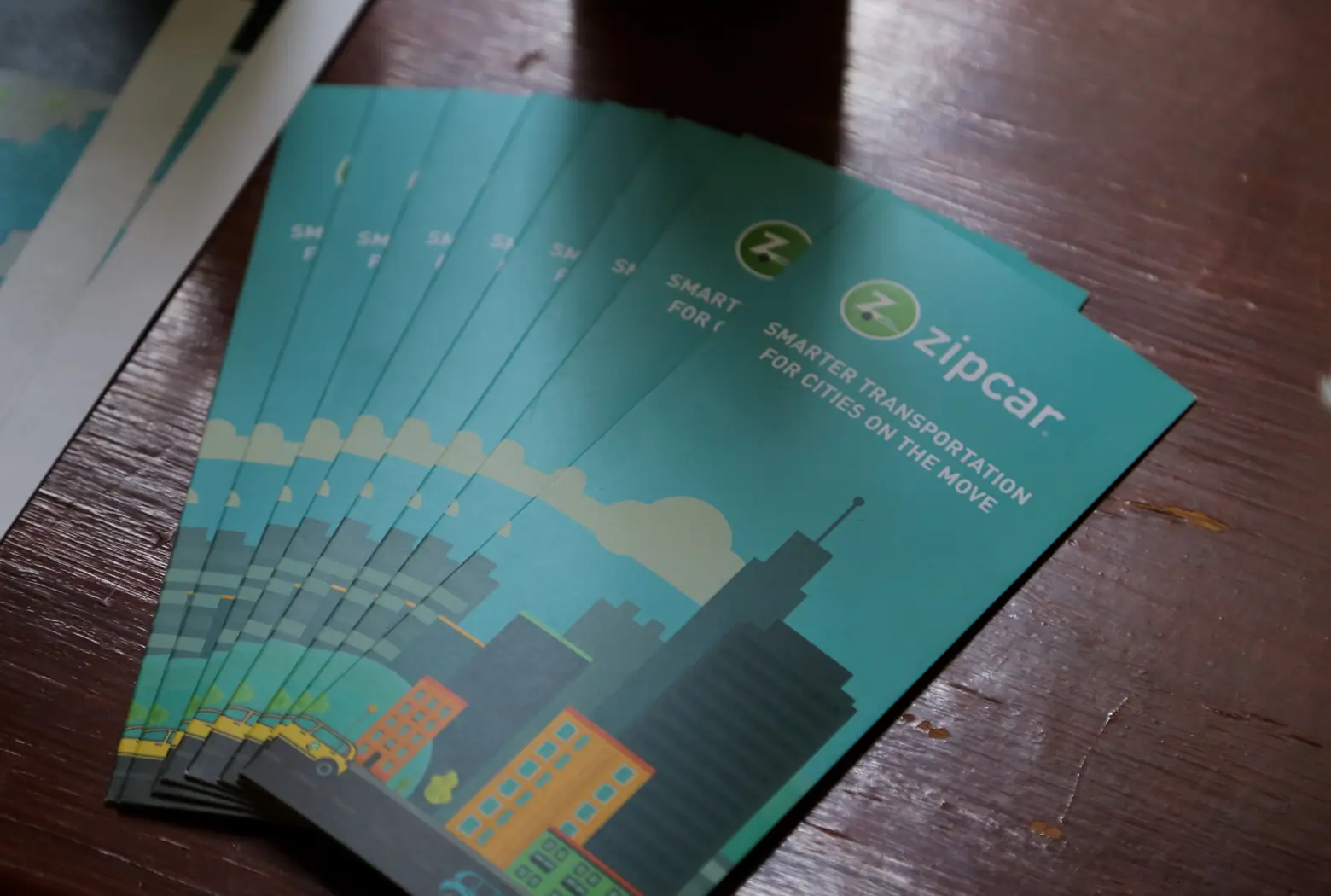 Photo:
Photo: 